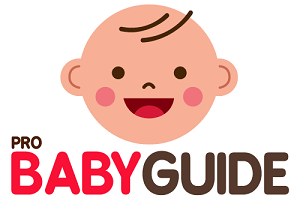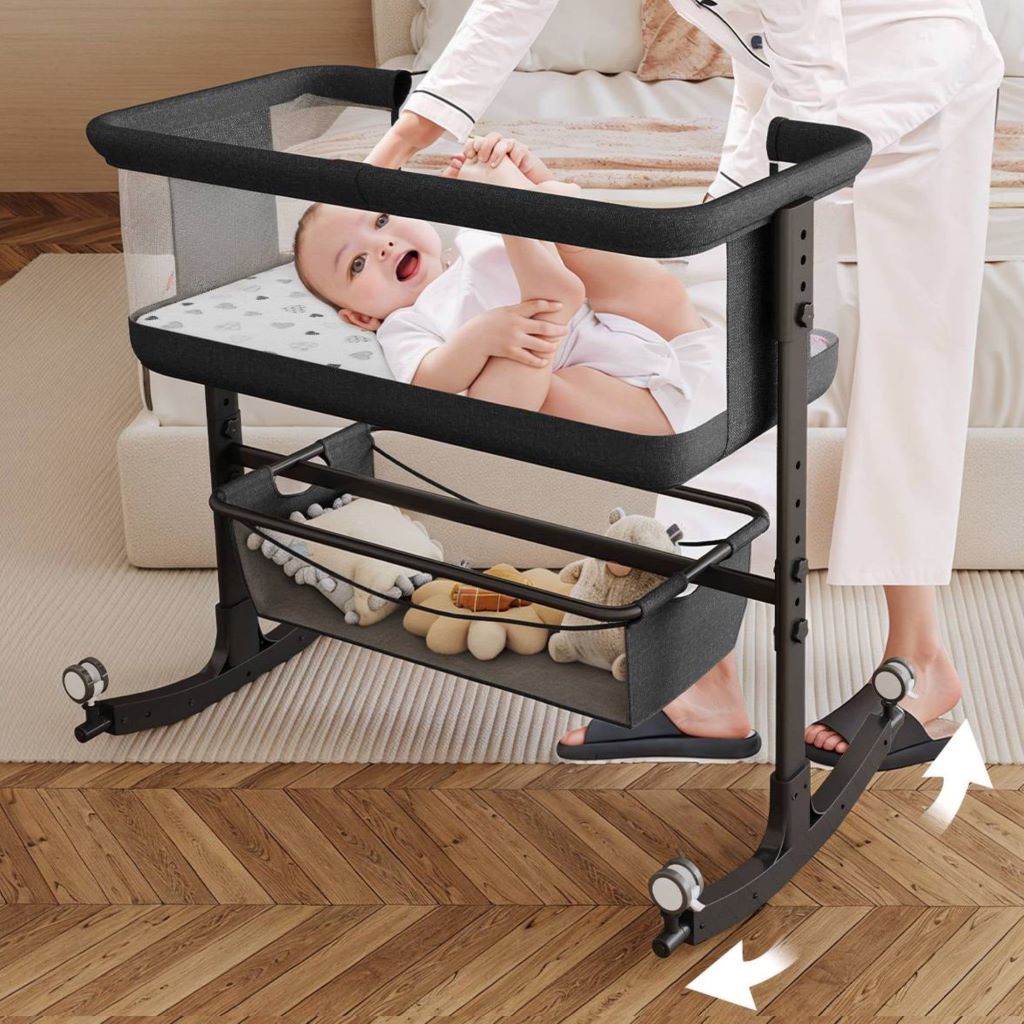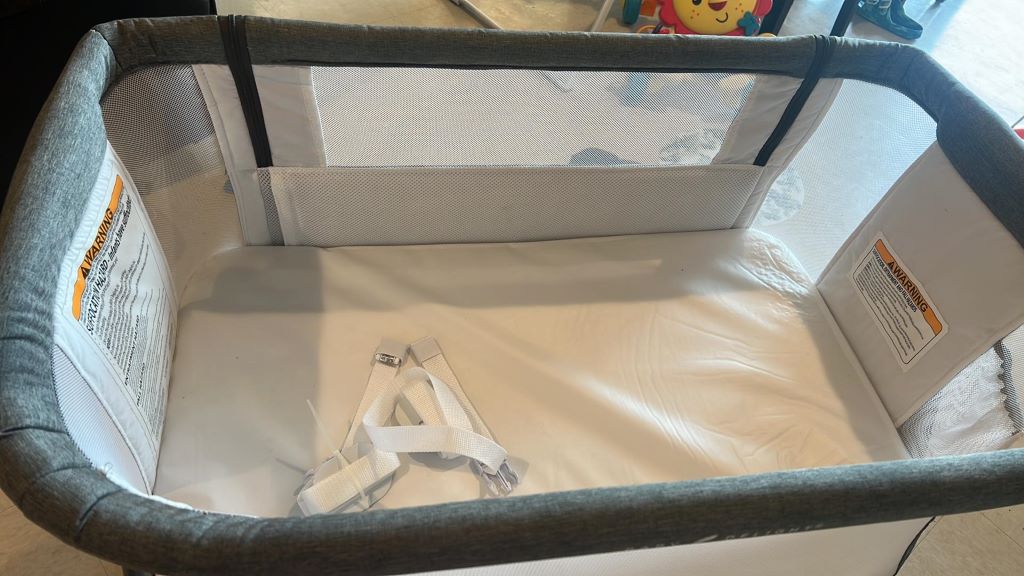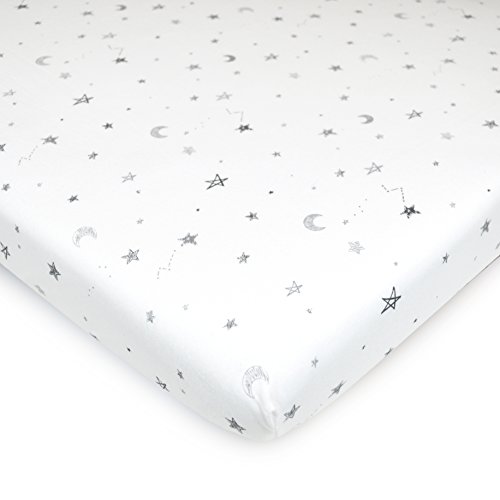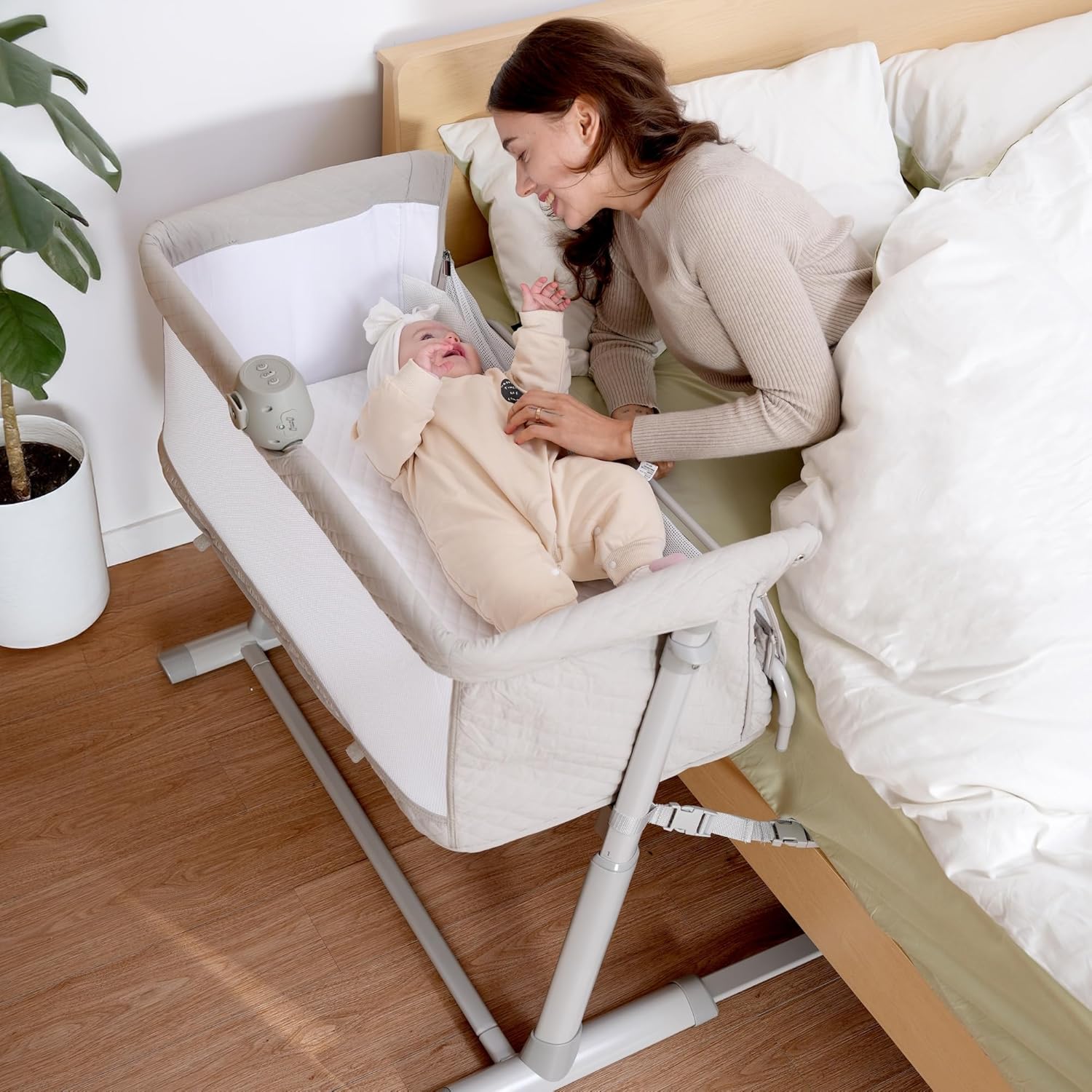A mesh bassinet is often a popular choice for parents seeking a safe and comfortable sleep solution for their newborns. However, mesh bassinet alternatives are also worth considering. Whether you’re looking for something more portable, stylish, or with added features, various alternatives can provide a secure and cozy sleep environment for your little one.
This article delves into various mesh bassinet alternatives, highlighting their features, benefits, and potential drawbacks to help you make an informed decision.
Understanding the Appeal of Mesh Bassinets
Before diving into alternatives, it’s worth understanding why mesh bassinets are so popular. Their breathable mesh sides promote airflow, reducing the risk of suffocation and overheating, a significant concern for newborns. They are also lightweight and portable, making it easy to move them around the house and keep your baby close by.
However, mesh bassinets may not be the perfect fit for every family. Some parents find them too small or lacking in features. Others may prefer a more permanent sleep solution as their baby grows.
Exploring Safe Alternatives
Here are some safe and popular alternatives to mesh bassinets:
1. Traditional Bassinets:
These bassinets often feature solid sides with some ventilation and come in various materials like wood or wicker. They offer a classic and stylish look and may include features like rocking or swiveling bases for soothing your baby.
- Pros: Sturdy, stylish, may offer soothing features.
- Cons: Can be less breathable than mesh, may be heavier and less portable.
2. Cribs:
While a crib is a long-term sleep solution, many models can be used from birth. They offer ample space for your baby to grow and often come with adjustable mattress heights to accommodate different stages.
- Pros: Long-term use, spacious, adjustable features.
- Cons: May feel too big for a newborn, takes up more space.
3. Mini Cribs:
A smaller version of a standard crib, mini cribs offer a balance of space and portability. They are an excellent option for smaller rooms or if you plan to transition your baby to a crib later on.
- Pros: More compact than a full-size crib, suitable for longer use than a bassinet.
- Cons: Still larger than a bassinet, may not be as portable.
4. Co-sleepers:
Designed to attach to the parents’ bed, co-sleepers allow for close proximity to your baby while maintaining separate sleep surfaces. They promote bonding and breastfeeding convenience while ensuring safe sleep practices.
- Pros: Facilitates breastfeeding, promotes bonding, keeps baby close.
- Cons: Requires sufficient space on the parents’ bed, may not be suitable for all bed types.
5. Travel Cribs:
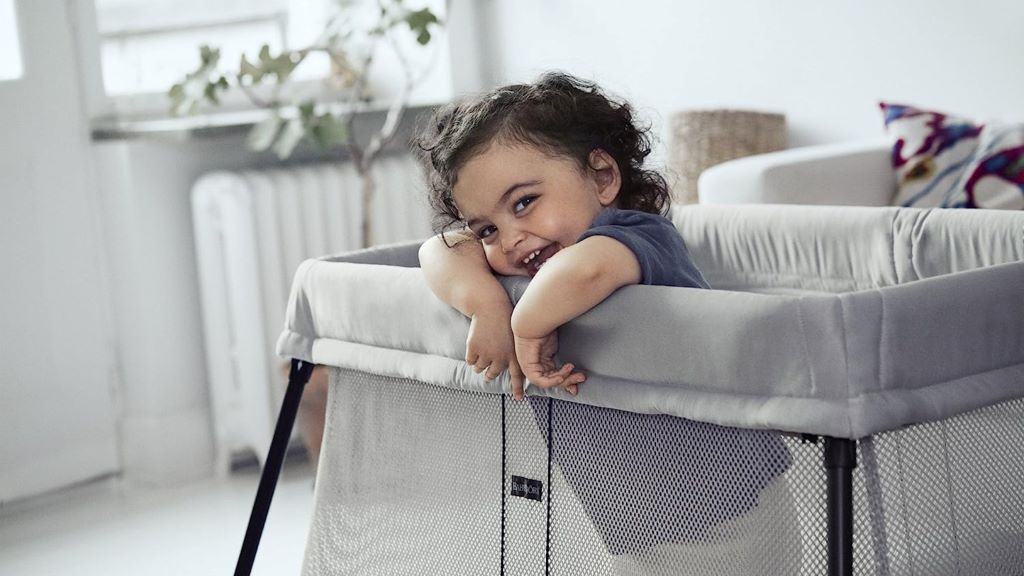
Lightweight and foldable, travel cribs are ideal for travel or as a temporary sleep solution at home. Many models come with mesh sides for breathability and additional features like bassinets or changing tables.
- Pros: Portable, versatile, suitable for travel.
- Cons: May not be as comfortable as a dedicated bassinet or crib.
6. Baby Boxes:
Inspired by the Finnish tradition, baby boxes provide a safe and contained sleep space for newborns. They are typically made of sturdy cardboard with a firm mattress and can be placed on a flat surface like the floor or a dresser.
- Pros: Portable, affordable, promotes safe sleep.
- Cons: Limited use period as the baby grows, may not be as aesthetically appealing as other options.
7. Hammocks and Swings:
While not recommended for prolonged sleep, baby hammocks and swings can provide a soothing and comforting environment for short naps. Supervised use and ensuring proper positioning are crucial for safety.
- Pros: Soothing motion, can help with reflux or colic.
- Cons: Not suitable for overnight sleep, safety concerns with unsupervised use.
You Might Enjoy: Top 5 Bassinet Strollers That Convert to Toddler Seats: Making Your Investment Last
Choosing the Right Alternative
Selecting the best mesh bassinet alternative depends on your individual needs and preferences. Consider the following factors:
- Safety: Ensure the product meets safety standards and has a firm, flat sleep surface.
- Size and Portability: Evaluate the dimensions and weight based on your living space and lifestyle.
- Comfort and Features: Look for features that enhance comfort and convenience, such as adjustable height, rocking motions, or storage options.
- Budget: Determine your budget and explore options within your price range.
- Lifestyle: Consider your lifestyle and how you plan to use the product, whether for travel, co-sleeping, or everyday use.
People Also Loved: Top 5 Bassinet Strollers That Convert to Toddler Seats: Making Your Investment Last
Prioritizing Safe Sleep Practices
Regardless of your chosen sleep solution, prioritizing safe sleep practices is crucial for your baby’s well-being. Remember the ABCs of safe sleep:
- Alone: Your baby should sleep alone in their crib, bassinet, or co-sleeper without any pillows, blankets, or toys.
- Back: Always place your baby on their back to sleep to reduce the risk of Sudden Infant Death Syndrome (SIDS).
- Crib: Ensure a firm, flat sleep surface that meets safety standards.
By following these guidelines and choosing a safe sleep option, you can provide your baby with a comfortable and secure sleep environment, promoting their healthy development and giving you peace of mind.
